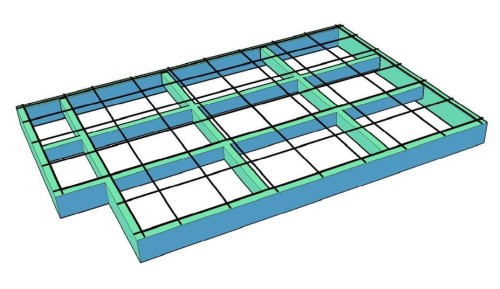
A Post Tension (PT) slab-on-grade (SOG) foundation is based on a typical raft SOG foundation with one major difference; high strength steel tendons pulled into tension. Tendons are typically ½” diameter made of 7 steel wire strands that is then greased and encased in a plastic coating. The grease and plastic coating helps to allow the tendon slide inside the concrete. Once the concrete has sufficient strength the tendons are stressed using hydraulic jacks to a force of 33kips. The tendons compress the concrete adding strength to the foundation when done correctly.
To help explain how post tension works many engineers describe the system using a row of wood blocks with a hole drilled in the middle and a rope. Alone the wood blocks fall apart without anything holding them together. But when a rope is placed through the holes, pulled tight and knotted at each end the blocks are now held together using compression. Compression describes a force pushing inwards on an object, while tension is the force pulling out on an object.
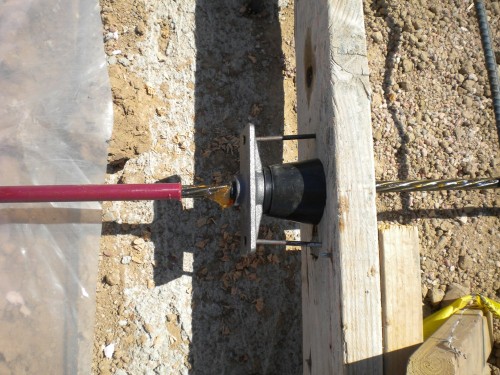
Concrete is very strong in compression, but week in tension. For example you can support a car with a couple concrete blocks, this is compression. But if you were to hang a car from a couple concrete blocks they would rip apart, this is tension. So to help make concrete stronger in tension you add steel. Typically, rebar is added and concrete is placed around it and bonds to become a composite material. One step further is adding steel that is in tension which then places the concrete into compression from equal and opposite forces. This takes advantage of the very high compression strength of concrete and increases the failing point of concrete in tension. Now the added internal force of roughly 50psi to 100psi must be exceeded before the concrete endures any tensile forces.
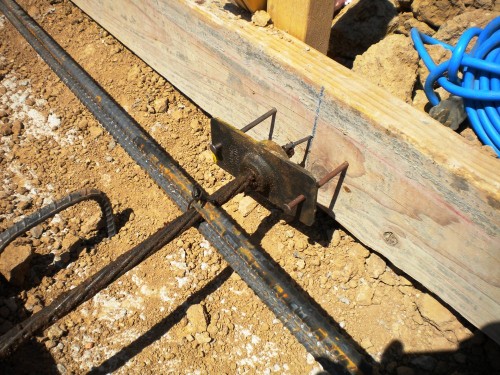
An advantage of adding these internal forces is greater strength than conventionally reinforced concrete. This means less concrete and steel to generate the same results as conventional concrete design. Another advantage of post tensioned concrete is control of cracks. ALL concrete cracks, but the width of the cracks can be controlled. Concrete shrinks as it cures and this puts internal tensile stress into the concrete. Post tension adds compressive forces that help to overcome the internal tensile forces from shrinkage. This means fewer cracks, add what cracks may occur are limited in width.
PROS
Less Concrete and Steel than typical reinforced SOG
Reduces cracks in the slab
A more rigid foundation and can resist movement from high swelling soils
CONS
A bit more technical than a reinforced SOG
Access to plumbing below slab is more difficult
Damaging tendons is expensive and dangerous


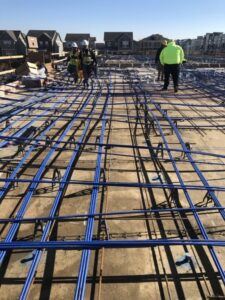
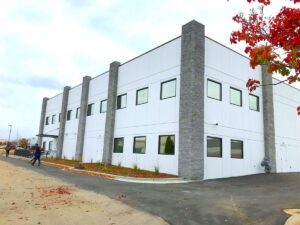






1 thought on “Post Tension Slab-on-Grade Foundation”
Pingback: Different Structural Foundation Types | Architecture, Engineering & Planning EVstudio | Denver & Evergreen Architect | Colorado & Central Texas | Blog
Comments are closed.